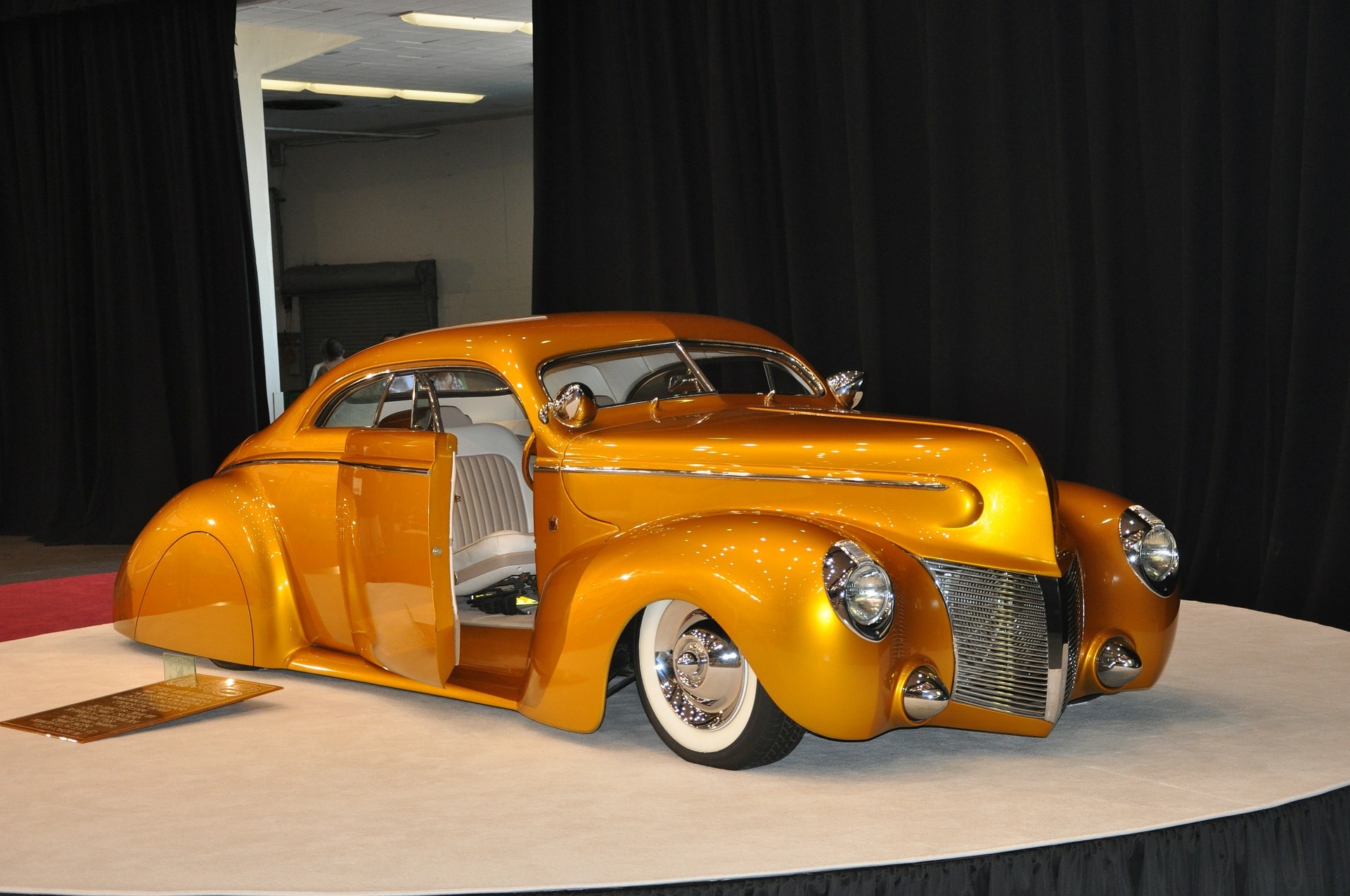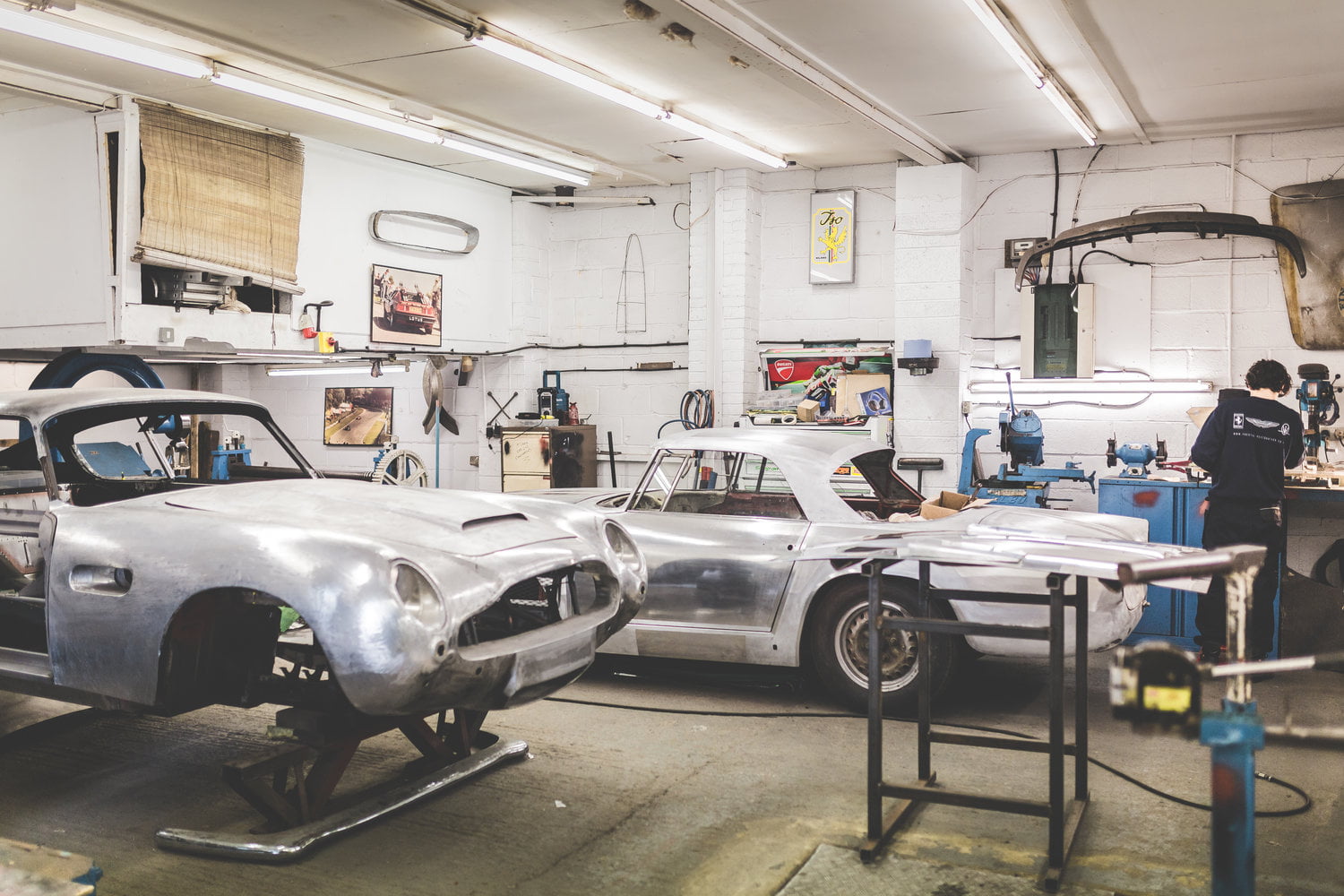Classic automotive restoration specialists are the guardians of automotive history, meticulously preserving and restoring cherished vehicles to their former glory. Their expertise extends far beyond mere mechanics, encompassing a deep understanding of the historical and cultural significance of these iconic machines.
From the gleaming bodywork to the purring engine, each restoration project is a testament to their unwavering dedication to authenticity and excellence. Their skilled hands breathe new life into automotive legends, ensuring that future generations can continue to marvel at the artistry and engineering marvels of the past.
Classic Automotive Restoration Expertise
Classic automotive restoration is a highly specialized field that requires a deep understanding of classic cars, their unique characteristics, and the techniques used to restore them to their original condition. It encompasses various aspects, from bodywork and paint to engine and drivetrain.
Classic car restoration experts possess a comprehensive knowledge of the history, design, and construction of classic cars. They have the skills to assess the condition of a classic car, identify the necessary repairs, and execute them with precision. These experts often have a deep passion for classic cars and a commitment to preserving their legacy.
Bodywork and Paint
Bodywork is a crucial aspect of classic car restoration. Experts in this field have the skills to repair or replace damaged body panels, ensuring a smooth and flawless finish. They also have a keen eye for detail and can match the original paint color and texture, giving the restored car an authentic look.
Engine and Drivetrain
Restoring the engine and drivetrain of a classic car requires specialized knowledge and expertise. Experts in this field can diagnose and repair engine problems, rebuild transmissions, and restore the car’s original performance specifications. They have a deep understanding of the mechanics of classic cars and can ensure that the restored car runs smoothly and reliably.
Examples of Successful Classic Automotive Restoration Projects
There are numerous examples of successful classic automotive restoration projects that showcase the expertise and dedication of restoration specialists. One notable example is the restoration of a 1957 Chevrolet Bel Air, which was meticulously restored to its original condition, winning numerous awards at classic car shows.
Restoration Process and Techniques
Restoring a classic car is a labor of love that requires meticulous attention to detail and a deep understanding of the vehicle’s original design and construction. The process involves a series of steps, from initial assessment and disassembly to final detailing and reassembly.
Assessment and Disassembly
The first step in any restoration project is to thoroughly assess the vehicle’s condition. This includes identifying any rust, damage, or missing parts. Once the assessment is complete, the car is disassembled into its major components, including the body, frame, engine, and transmission.
Body Restoration
The body of a classic car is often the most challenging part to restore. Rust is a common problem, and it can require extensive welding and metal fabrication to repair. Once the body is repaired, it is repainted in its original color and finish.
Frame Restoration
The frame of a classic car is the foundation of the vehicle. It is responsible for supporting the body and all of the other components. Frame restoration typically involves welding and painting, as well as replacing any damaged or rusted sections.
Engine and Transmission Restoration
The engine and transmission are the heart of a classic car. Restoring these components requires a high level of mechanical expertise. The engine is typically rebuilt, and the transmission is overhauled. In some cases, it may be necessary to replace the engine or transmission with a new or rebuilt unit.
Upholstery Restoration
The upholstery of a classic car can make a big difference in its overall appearance. Restoring the upholstery typically involves removing the old fabric and replacing it with new material. The new fabric should be as close to the original as possible, both in terms of color and texture.
Final Detailing
Once all of the major components have been restored, the final step is to detail the car. This includes cleaning the exterior and interior, polishing the paint, and installing new trim and accessories. When the detailing is complete, the classic car is ready to be enjoyed once again.
Preservation and Maintenance
Once your classic car has been restored to its former glory, it’s crucial to preserve its beauty and performance for years to come. This requires a commitment to proper storage, maintenance, and repair techniques.
Storage
Protect your classic car from the elements by storing it in a dry, well-ventilated area. Avoid exposing it to extreme temperatures or humidity, which can damage the paint, interior, and mechanical components. Use a car cover to shield it from dust and dirt.
Maintenance
Regular maintenance is essential to keep your classic car running smoothly. This includes:
Oil changes
Follow the manufacturer’s recommended oil change intervals to keep the engine lubricated and clean.
Filter replacements
Replace air, fuel, and oil filters regularly to prevent contaminants from entering the engine and other systems.
Tire inspections
Check tire pressure and tread depth frequently to ensure safe driving conditions.
Battery maintenance
Keep the battery clean and free of corrosion, and replace it as needed to prevent starting problems.
Repairs
When repairs are necessary, seek out qualified mechanics who specialize in classic car restoration. They will have the knowledge and experience to properly diagnose and repair your vehicle without damaging its value or authenticity.
Protection from the Elements
Protect your classic car from the sun’s harmful UV rays by applying a high-quality wax or sealant. This will help prevent fading and damage to the paint. In areas with harsh winters, use a car cover or store the car in a heated garage to protect it from snow, ice, and salt.
Historical and Cultural Significance
Classic cars are not merely machines; they are symbols of history, culture, and technological innovation. Their enduring appeal stems from their unique blend of nostalgia, aesthetics, and mechanical prowess.
From the dawn of the automobile, classic cars have played a pivotal role in shaping automotive design and technology. They embody the dreams and aspirations of their creators, pushing the boundaries of engineering and aesthetics.
Icons of Their Era
Throughout history, numerous classic cars have emerged as icons of their respective eras. These automobiles have captured the imagination of generations and continue to inspire designers and enthusiasts alike:
- 1932 Ford Model B:A timeless roadster that epitomized the glamour and speed of the Art Deco era.
- 1955 Chevrolet Bel Air:An American icon representing the optimism and prosperity of the post-war years.
- 1963 Shelby Cobra:A legendary sports car that combined British handling with American muscle, forever changing the landscape of racing.
- 1969 Volkswagen Beetle:A global phenomenon that democratized car ownership and became a symbol of counterculture.
- 1972 Ferrari Dino 246 GTS:A mid-engined marvel that redefined the supercar genre with its sleek lines and exceptional performance.
Industry Trends and Innovations
The classic automotive restoration industry is constantly evolving, with new trends and innovations emerging all the time. These trends are being driven by a number of factors, including the increasing popularity of classic cars, the development of new technologies, and the changing needs of collectors and enthusiasts.
One of the most significant trends in the industry is the increasing use of technology to restore classic cars. This technology is being used to improve the accuracy and efficiency of the restoration process, and to create new and innovative ways to preserve and maintain classic cars.
Latest Technologies and Techniques, Classic automotive restoration specialists
- 3D scanning and printing is being used to create accurate replicas of original parts, which can be used to replace damaged or missing parts.
- Laser welding is being used to repair metal body panels, which is a more precise and efficient method than traditional welding.
- Computer-controlled paint systems are being used to apply paint more evenly and consistently, which results in a higher quality finish.
These are just a few of the latest technologies and techniques being used to restore classic cars. As technology continues to develop, we can expect to see even more innovative and groundbreaking methods emerge in the years to come.
Future of Classic Automotive Restoration
The future of classic automotive restoration is bright. The industry is growing, and there is a growing demand for skilled restorers. As technology continues to develop, we can expect to see even more innovative and groundbreaking methods emerge in the years to come.
Classic cars are a valuable part of our history and culture, and they deserve to be preserved and maintained for future generations. The classic automotive restoration industry is playing a vital role in ensuring that these cars continue to be enjoyed for years to come.
Outcome Summary: Classic Automotive Restoration Specialists
In an era of rapid technological advancements, the work of classic automotive restoration specialists serves as a poignant reminder of the enduring power of craftsmanship and the timeless allure of the automobile. Their passion for preserving automotive heritage ensures that these rolling works of art will continue to grace our roads and inspire generations to come.
Q&A
What sets classic automotive restoration specialists apart from regular mechanics?
Classic automotive restoration specialists possess a specialized understanding of the historical and cultural significance of classic vehicles, coupled with the technical expertise to restore them to their original condition using authentic materials and techniques.
How can I find a reputable classic automotive restoration specialist?
Look for specialists with a proven track record of successful restorations, industry certifications, and positive customer testimonials. Attend classic car shows and events to network with specialists and view their work firsthand.
What are the benefits of restoring a classic car?
Restoring a classic car not only preserves a piece of automotive history but also enhances its value, provides a unique driving experience, and fosters a sense of pride and accomplishment.


